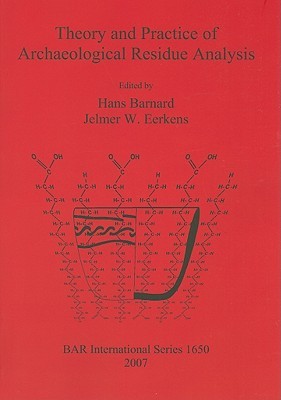
- We will send in 10–14 business days.
- Publisher: British Archaeological Reports Oxford Ltd
- Year: 2007
- Pages: 274
- ISBN-10: 1407300849
- ISBN-13: 9781407300849
- Format: 21.1 x 29.5 x 2 cm, softcover
- Language: English
- SAVE -10% with code: EXTRA
Theory and Practice of Archaeological Residue Analysis (e-book) (used book) | bookbook.eu
Reviews
Description
Organic residues include a broad range of materials that can be analyzed at a macro-, micro- or molecular level. They represent the carbon-based remains (in combination with H, N, O, P and S) of fungi, plants, animals and humans. Organic residue analysis is a relatively new technique to archaeology. The chapters of this volume bring together scholars from across the globe and attest to the diverse range of analytical methods, material types, spatio-temporal cultural units and research questions to which organic residue analysis has been applied. They are partly the proceedings of a symposium on this subject, held on 31 March 2005 in Salt Lake City (Utah) during the 70th Annual Meeting of the Society for American Archaeology, and partly the result of invitations to contribute forwarded to many active in this field.
EXTRA 10 % discount with code: EXTRA
The promotion ends in 17d.19:31:48
The discount code is valid when purchasing from 10 €. Discounts do not stack.
- Publisher: British Archaeological Reports Oxford Ltd
- Year: 2007
- Pages: 274
- ISBN-10: 1407300849
- ISBN-13: 9781407300849
- Format: 21.1 x 29.5 x 2 cm, softcover
- Language: English English
Organic residues include a broad range of materials that can be analyzed at a macro-, micro- or molecular level. They represent the carbon-based remains (in combination with H, N, O, P and S) of fungi, plants, animals and humans. Organic residue analysis is a relatively new technique to archaeology. The chapters of this volume bring together scholars from across the globe and attest to the diverse range of analytical methods, material types, spatio-temporal cultural units and research questions to which organic residue analysis has been applied. They are partly the proceedings of a symposium on this subject, held on 31 March 2005 in Salt Lake City (Utah) during the 70th Annual Meeting of the Society for American Archaeology, and partly the result of invitations to contribute forwarded to many active in this field.


Reviews